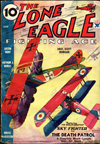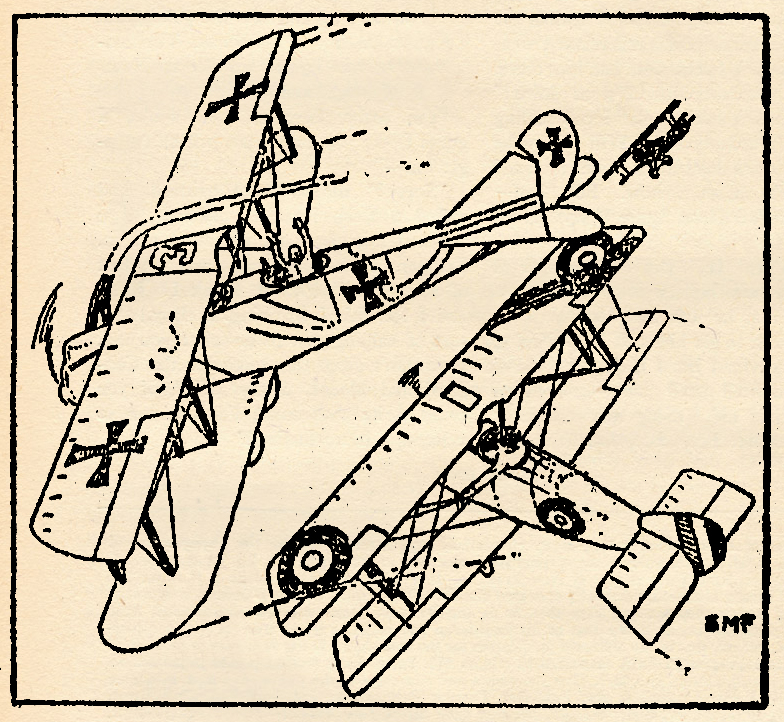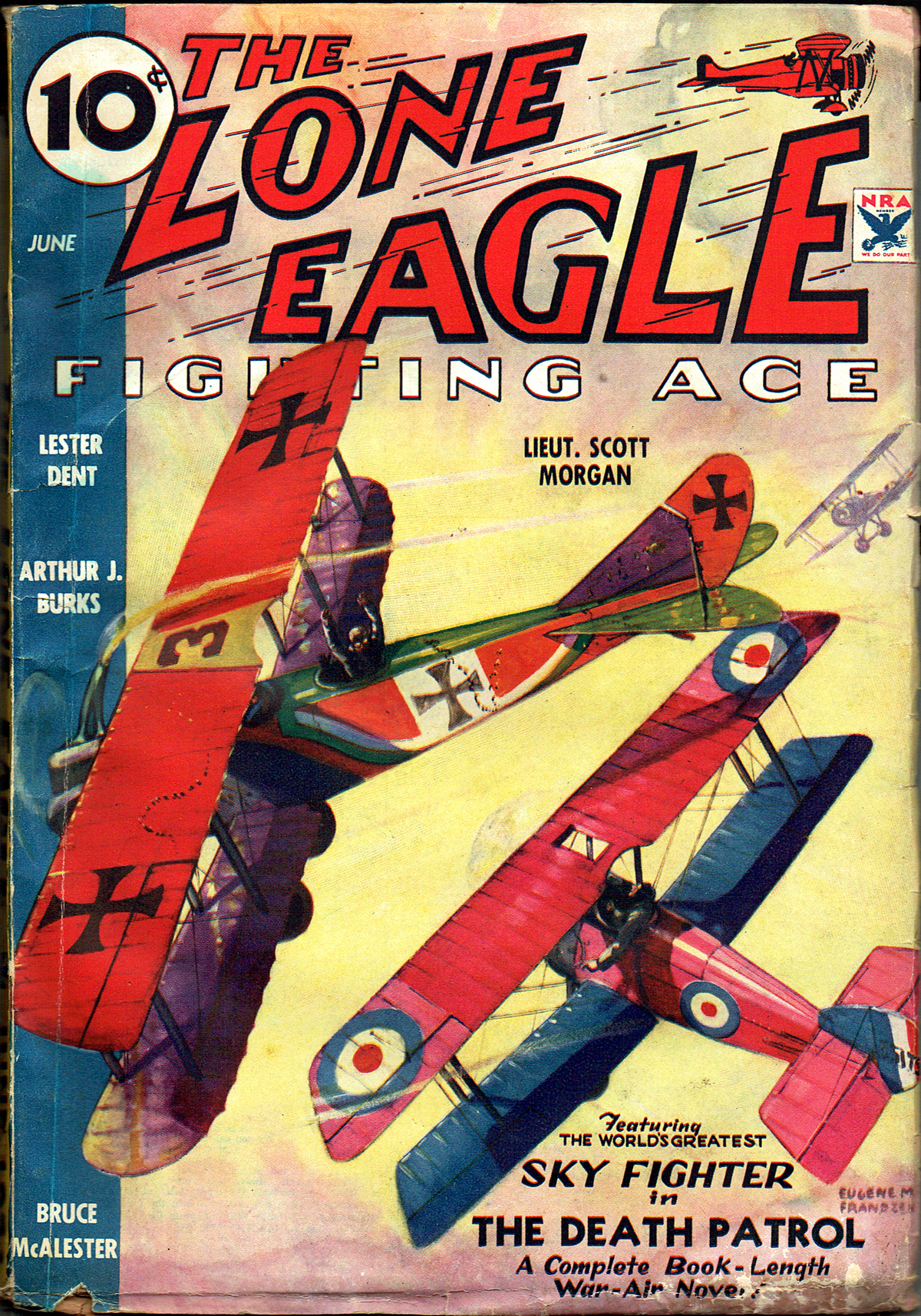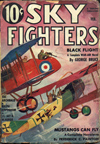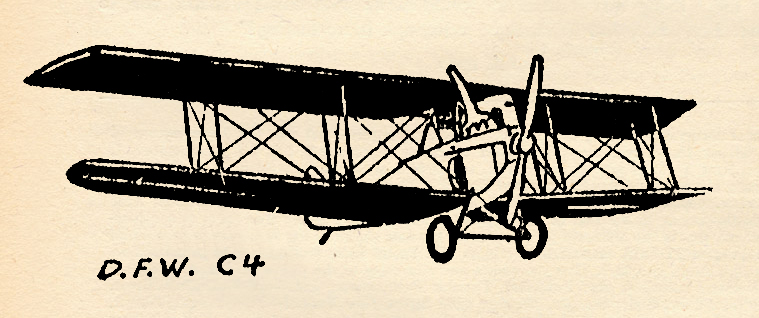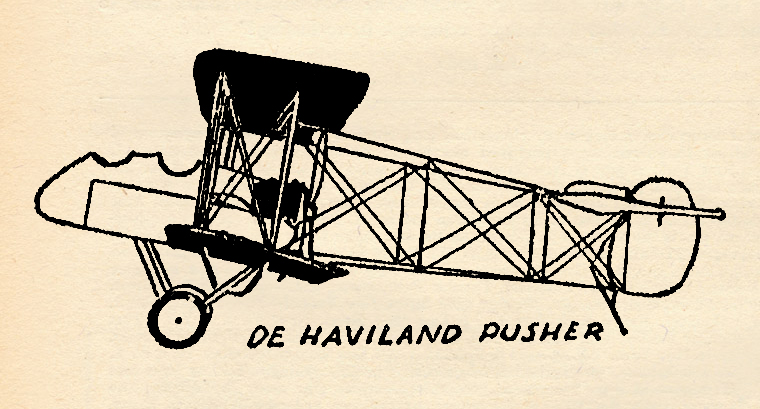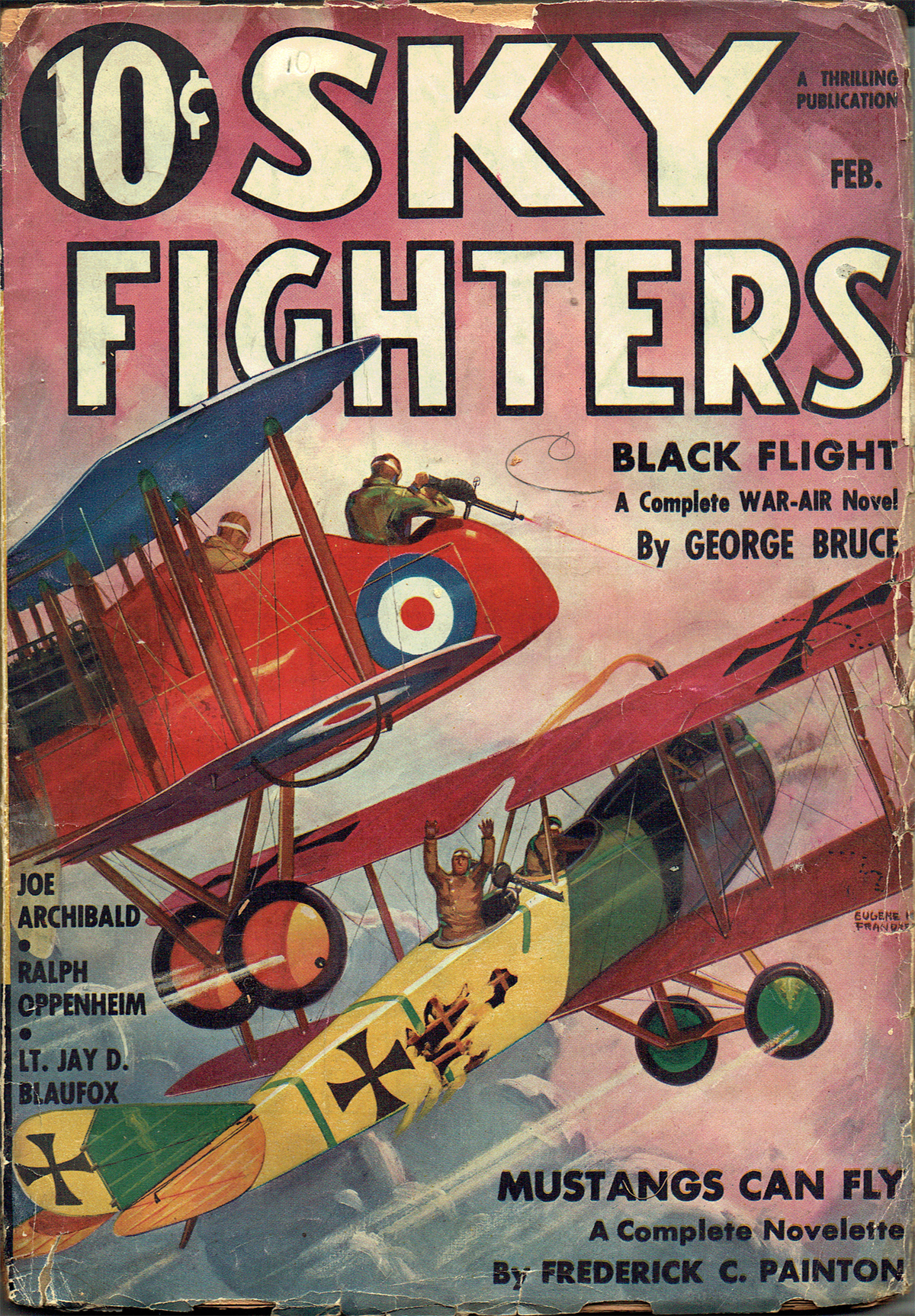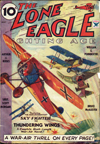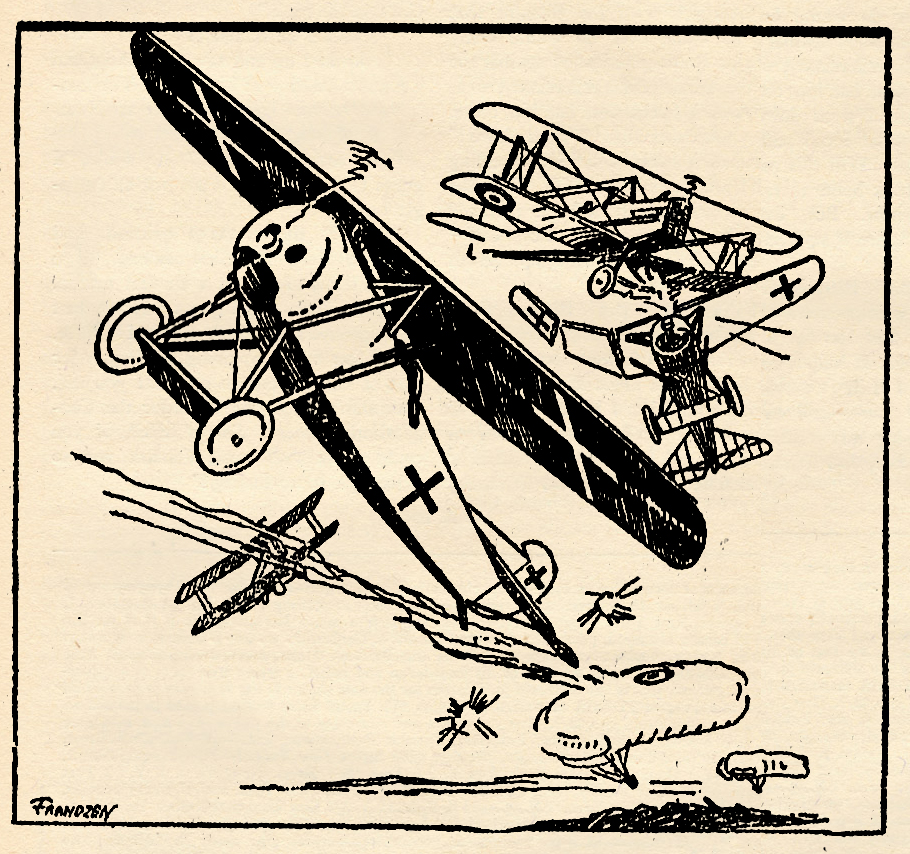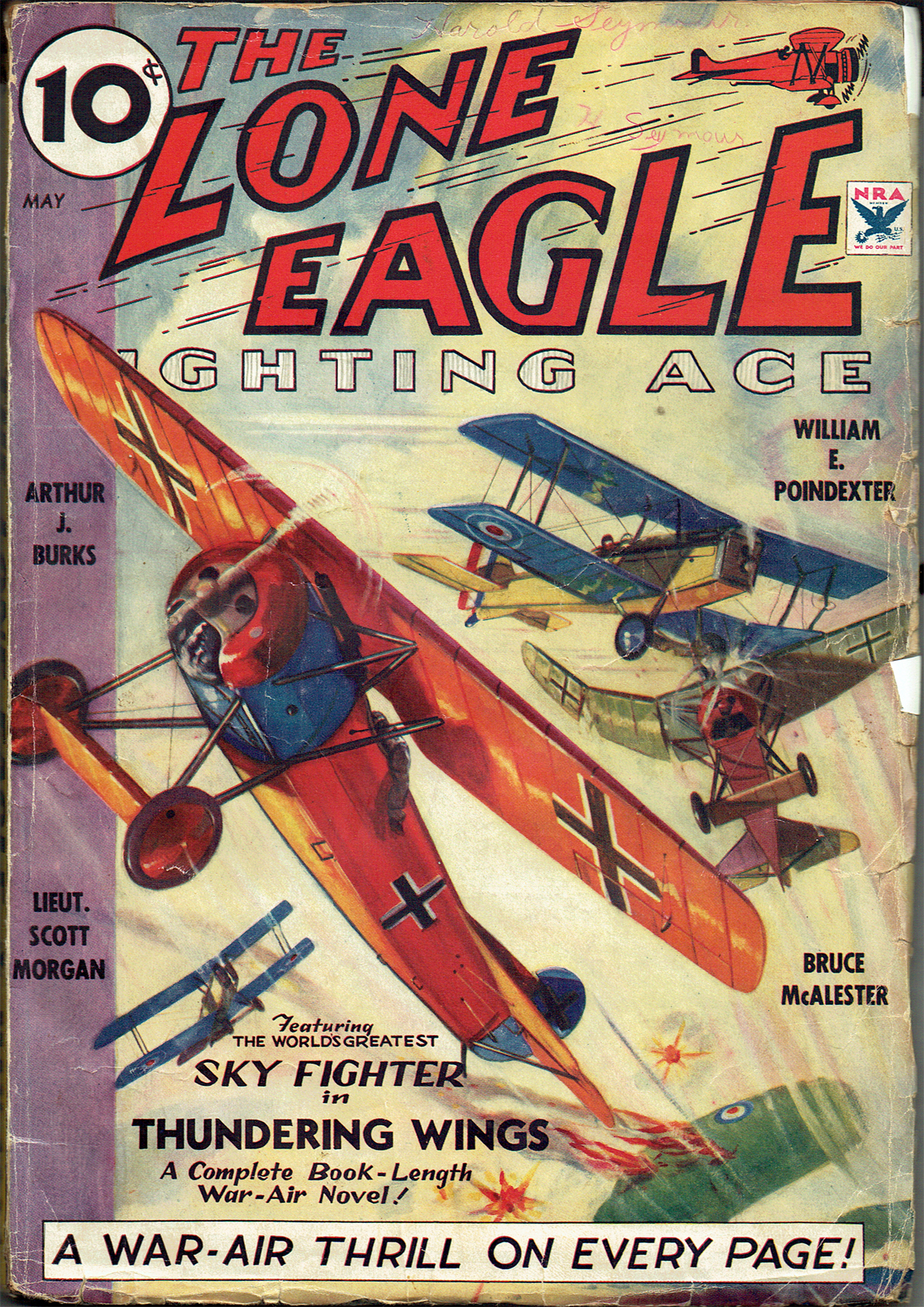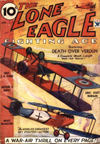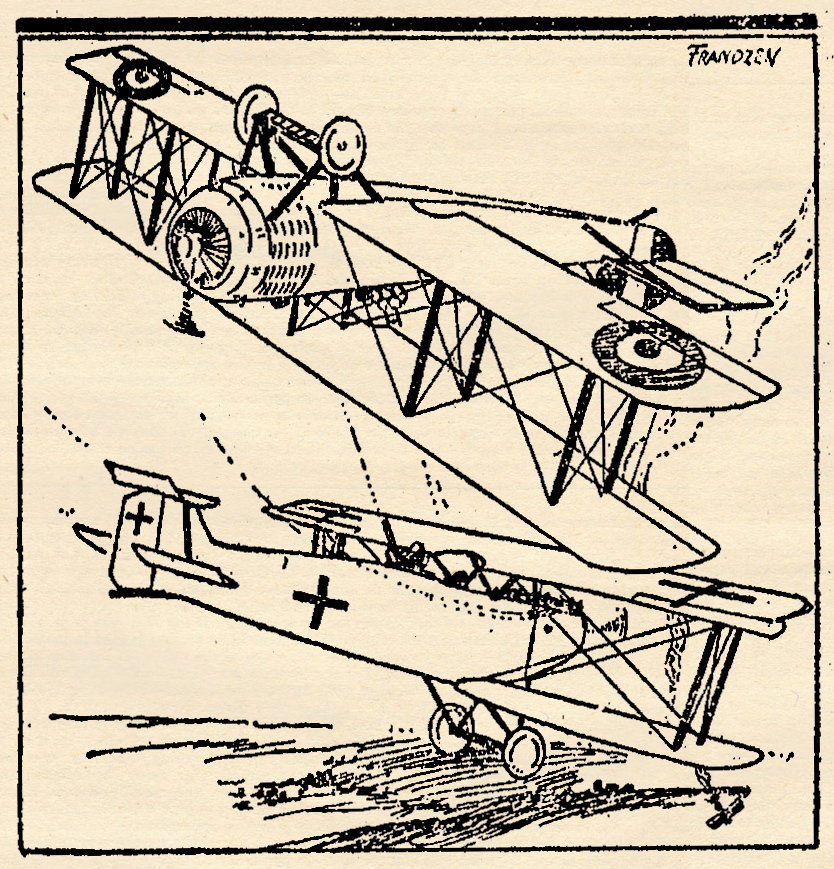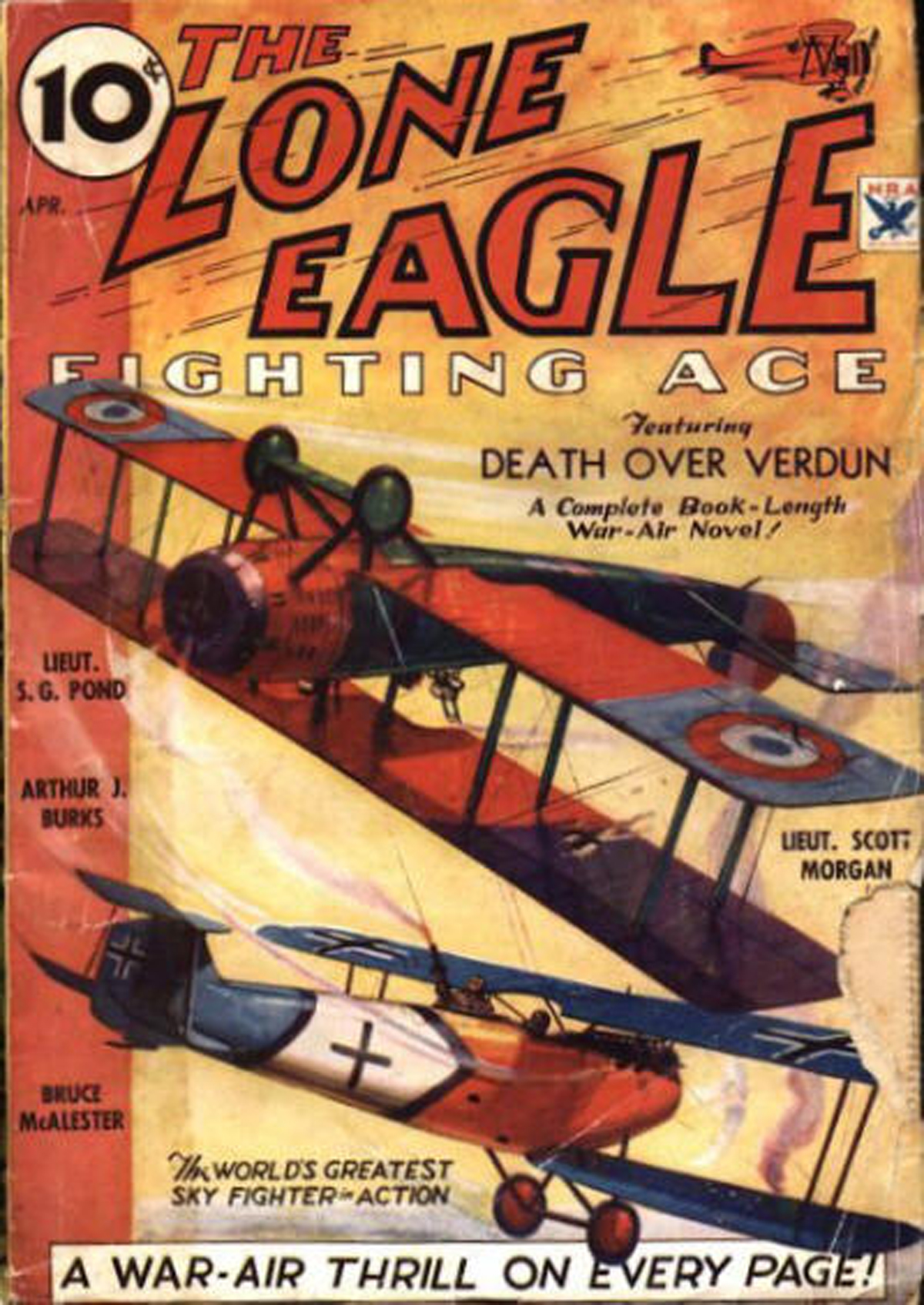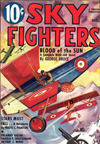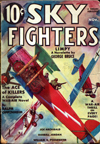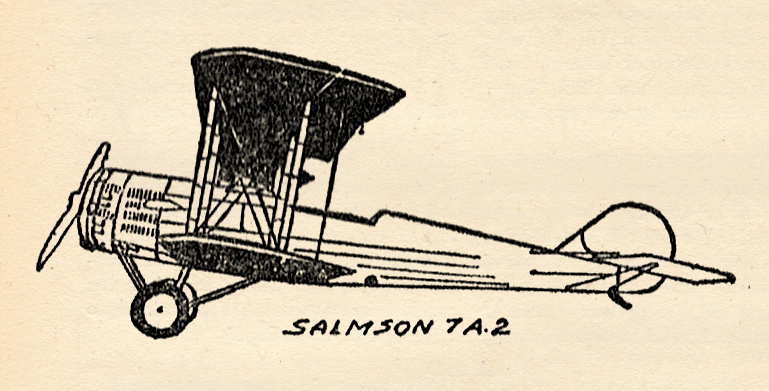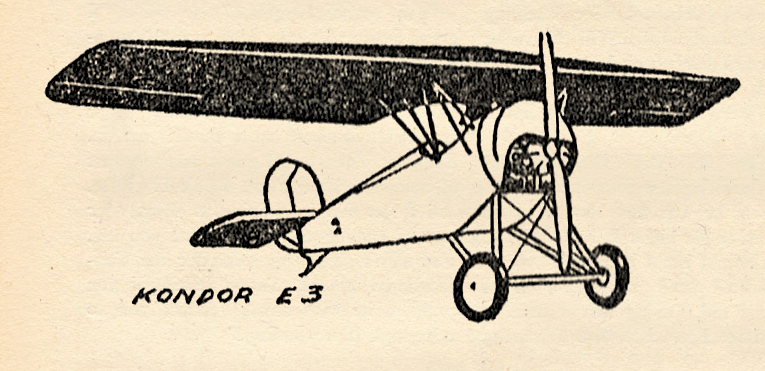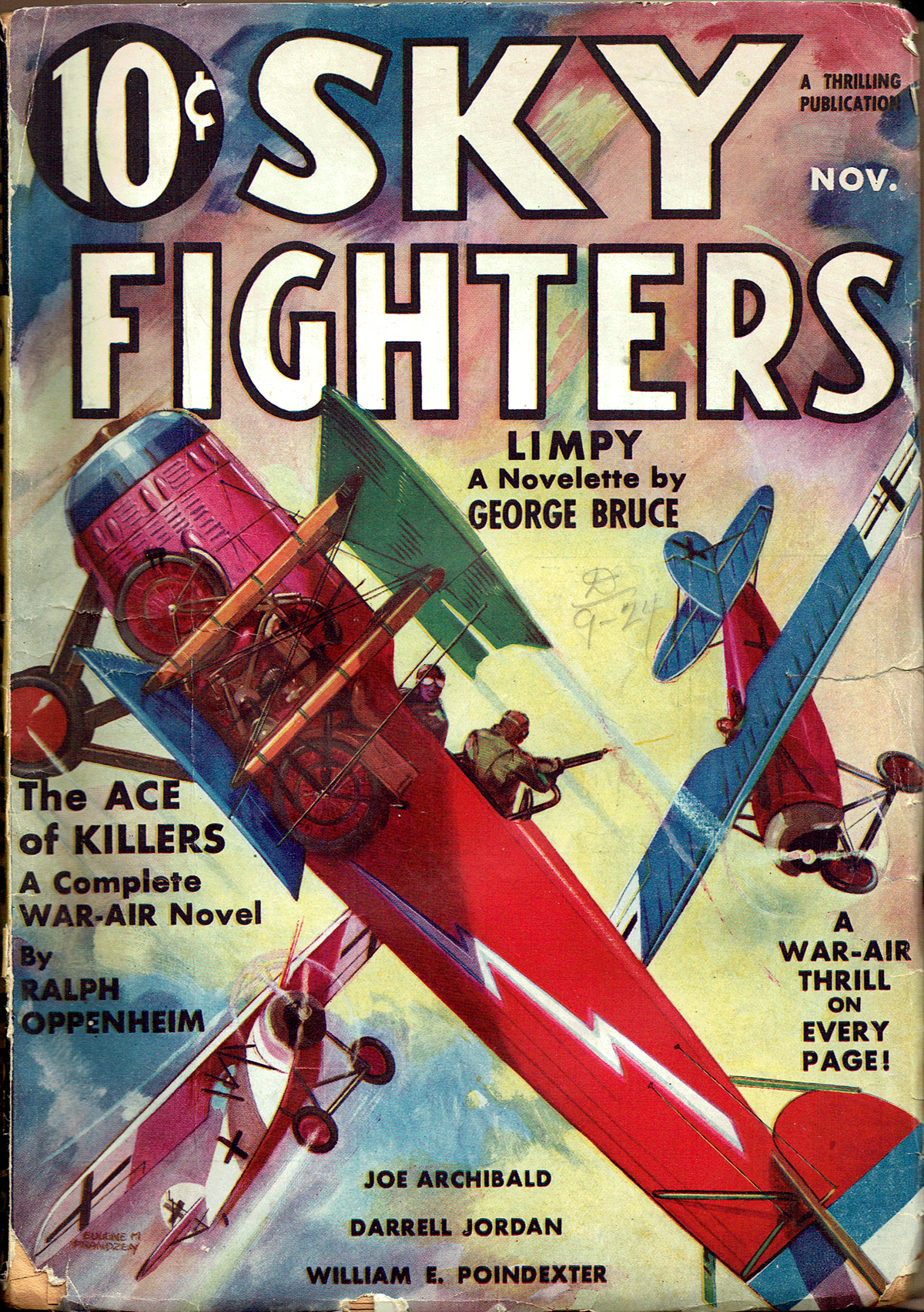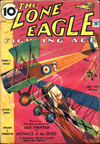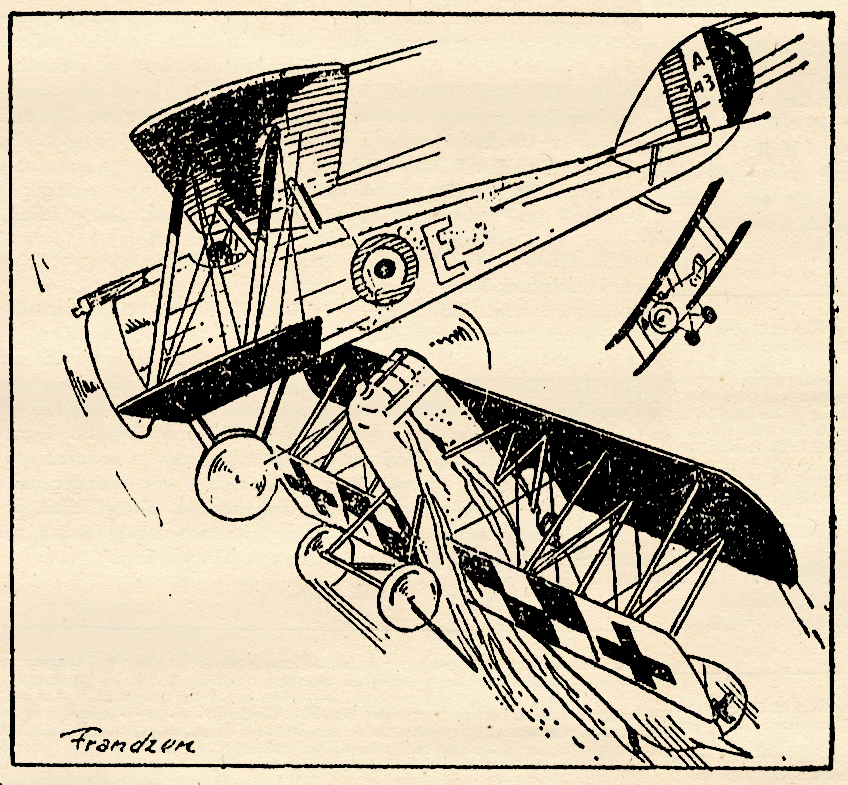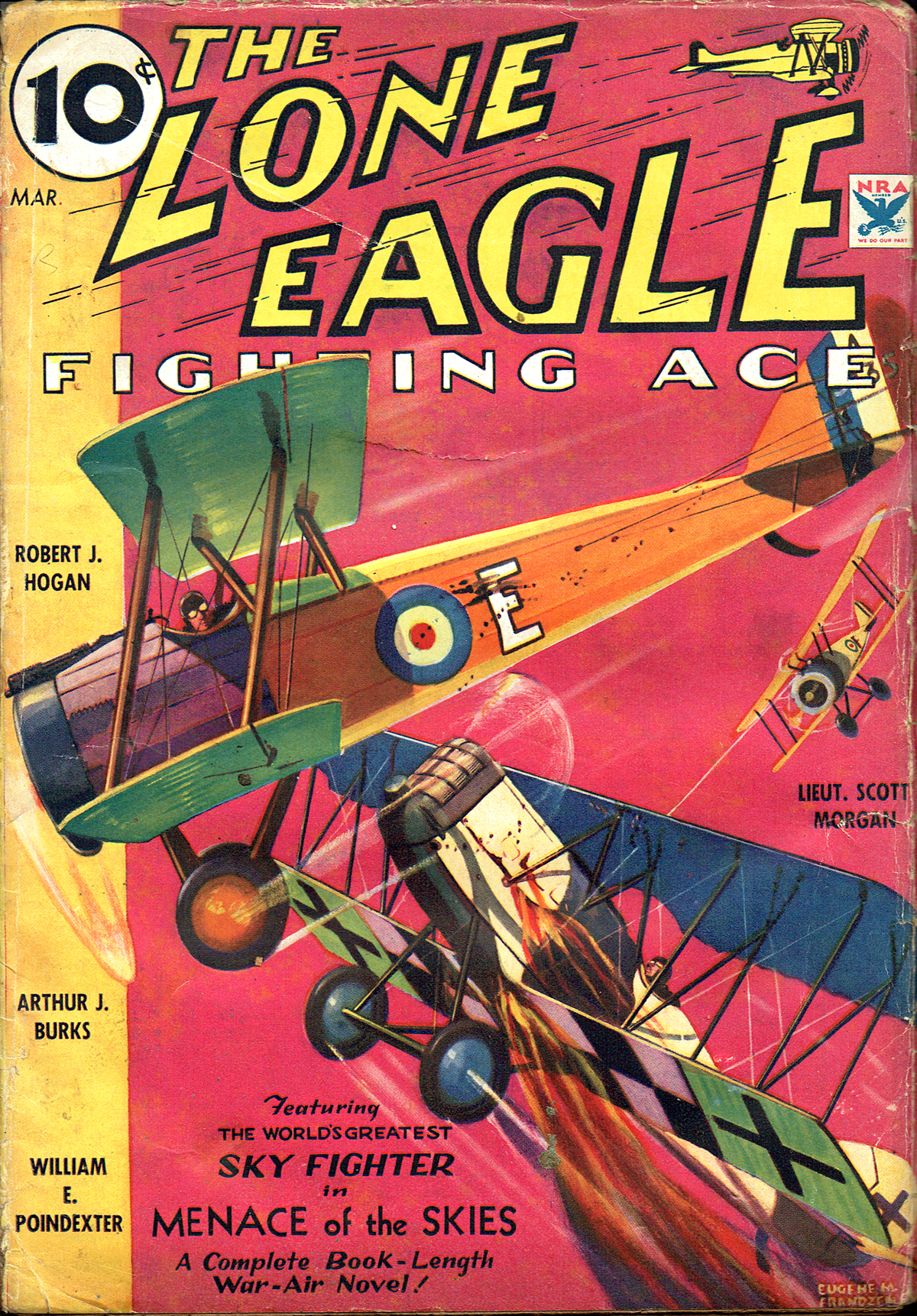“Sky Fighters, November 1936″ by Eugene M. Frandzen
Eugene M. Frandzen painted the covers of Sky Fighters from its first issue in 1932 until he moved on from the pulps in 1939. At this point in the run, the covers were about the planes featured on the cover more than the story depicted. On the November 1936 cover, It’s a S.V.A. coming to chase of a Fokker D6 trying to thwart the Italians from moving a canon between mountains platforms!
The Ships on the Cover
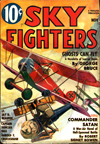 ITALY, before the beginning of the World War, was a potential enemy of the Allies because of her Triple Alliance with Germany and Austria made prior to 1914. On August 1, 1914, Germany declared war on Russia. On that same day Italy renounced her tie to Germany and declared she would stay neutral. But to declare and to actually keep her skirts out of the war muck of blazing Europe were quite different things. On May 24, 1915, Italy declared war on her former ally, Austria. From that day until Austria signed truce terms with Italy on Nov. 3, 1913, the Italian front was the scene of the most dramatic and nerve fraying encounters of the war. Men fought on snowcapped peaks, on slippery sides of glacial formations, on ledges where mountain goats would become jittery. It was slow tortuous labor, this perpendicular scrapping but one in which both sides were familiar.
ITALY, before the beginning of the World War, was a potential enemy of the Allies because of her Triple Alliance with Germany and Austria made prior to 1914. On August 1, 1914, Germany declared war on Russia. On that same day Italy renounced her tie to Germany and declared she would stay neutral. But to declare and to actually keep her skirts out of the war muck of blazing Europe were quite different things. On May 24, 1915, Italy declared war on her former ally, Austria. From that day until Austria signed truce terms with Italy on Nov. 3, 1913, the Italian front was the scene of the most dramatic and nerve fraying encounters of the war. Men fought on snowcapped peaks, on slippery sides of glacial formations, on ledges where mountain goats would become jittery. It was slow tortuous labor, this perpendicular scrapping but one in which both sides were familiar.
The Austrians took an awful beating at the hands of the Italians until October, 1917, when the Austrians launched ferocious counter attacks, driving the Italians back and back. It was not until June, 1918, that the Italians again took the offensive. From then on it was the beginning of the end for Austria.

An Almost Unknown Ship
The Fokker D6 was not given the publicity it deserved and all the glory falling upon the D7 overshadowed it so that it was almost an unknown ship. It did plenty of service on the Western front and was so good that the Allied squadrons who banged into its speedy way were writing it up in their flight reports around the end of 1917. It did most of its damage on the Italian front and the Italians who fought it in their S.V.A. fighting scouts were a couple of minutes behind in climbing to give it battle. A few minutes difference in a plane can mean a lot in the air. The Fokker D6 had an Oberursel engine of 110 h.p. against the S.V.A.’s 210 h.p. Spa motor. It was suicide for the Italians to stage single man duels with that fast moving, supermaneuverable Fokker. So they flew in droves and kept the superior ships from absolutely ruling the skies.
The Austrians knew that supplies which were stored high on the mountain tops were being safely transported by the retreating Italians. The ground forces of Austria had hoped to capture those stores. But mountain fronts are taken by inches and feet, not yards and miles.
Enemy Planes Come Closer
Men who had worked days rigging up a cable across a valley groaned as they watched the enemy planes getting closer and closer to their hidden means of transportating their huge heavy artillery to the rear. One morning at daybreak a giant gun was eased out onto the cable. A gunner rode a swaying platform, a rope tied to each end of the gun ran to mountain peaks between which the gun was to be ferried. Those ropes acted as brakes and motive power for the gun’s movements. The man on the platform signaled constantly to both sides to control the speed and angle of his passage.

As the gun neared the halfway mark in its dizzy trek, the Italian suddenly signaled frantically for full speed ahead. A roaring Fokker D6 was racing up from the valley futilely pursued by an S.V.A. The Austrian pilot’s guns began hammering out lead. The Italian on his swaying perch crouched low. Bullets raked the sides of the cannon, whined off into space. Nearer and nearer raced the enemy plane. The Italian without even a pistol seemed calm in the face of such overpowering odds. His waving hands continued to signal his comrades at the two ends of the cable. For a moment he held one hand extended like an orchestra conductor holding a long note. Then abruptly he dropped it to his side and grabbed the ropes. The men at the drum controlling the cable’s tension understood the signal. They kicked out the rachet guide and the drum raced in reverse, giving out slack.
The Austrian pilot coming up from below sure of a kill and a report to headquarters which would send bombers to wreck the gun transporting equipment, suddenly yanked at his controls as a look of horror flashed in his eyes. Too late! The sagging cable smashed down into the leading edge of his top wing. The cannon and its human cargo lurched and swayed with the impact. The Austrian plane stopped. A twisted mass, it hung for a moment then plunged straight down.
The Italian wiped sweat from his dusky brow, looked over his equipment, nodded approval and gave the signal that would take him and his charge to their destination.

Sky Fighters, November 1936 by Eugene M. Frandzen
(The Ships on The Cover Page)





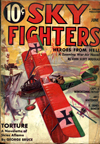



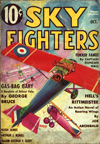
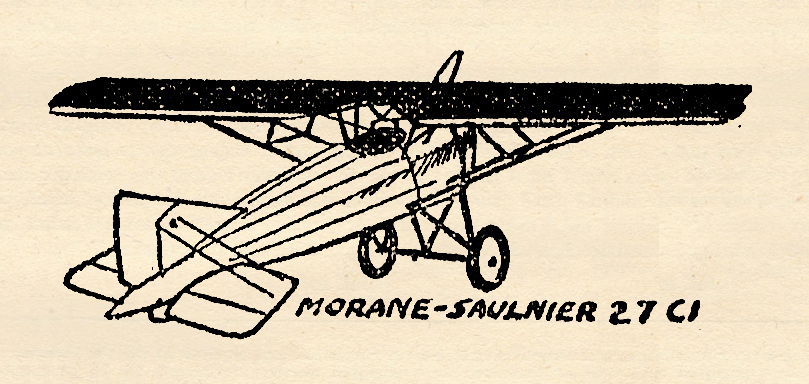
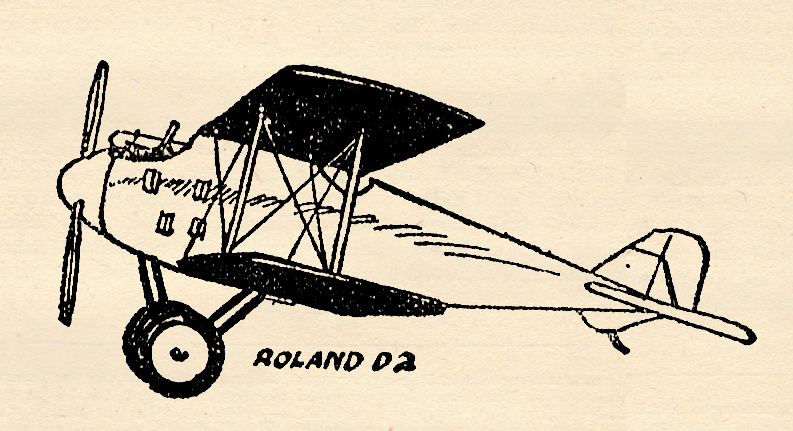
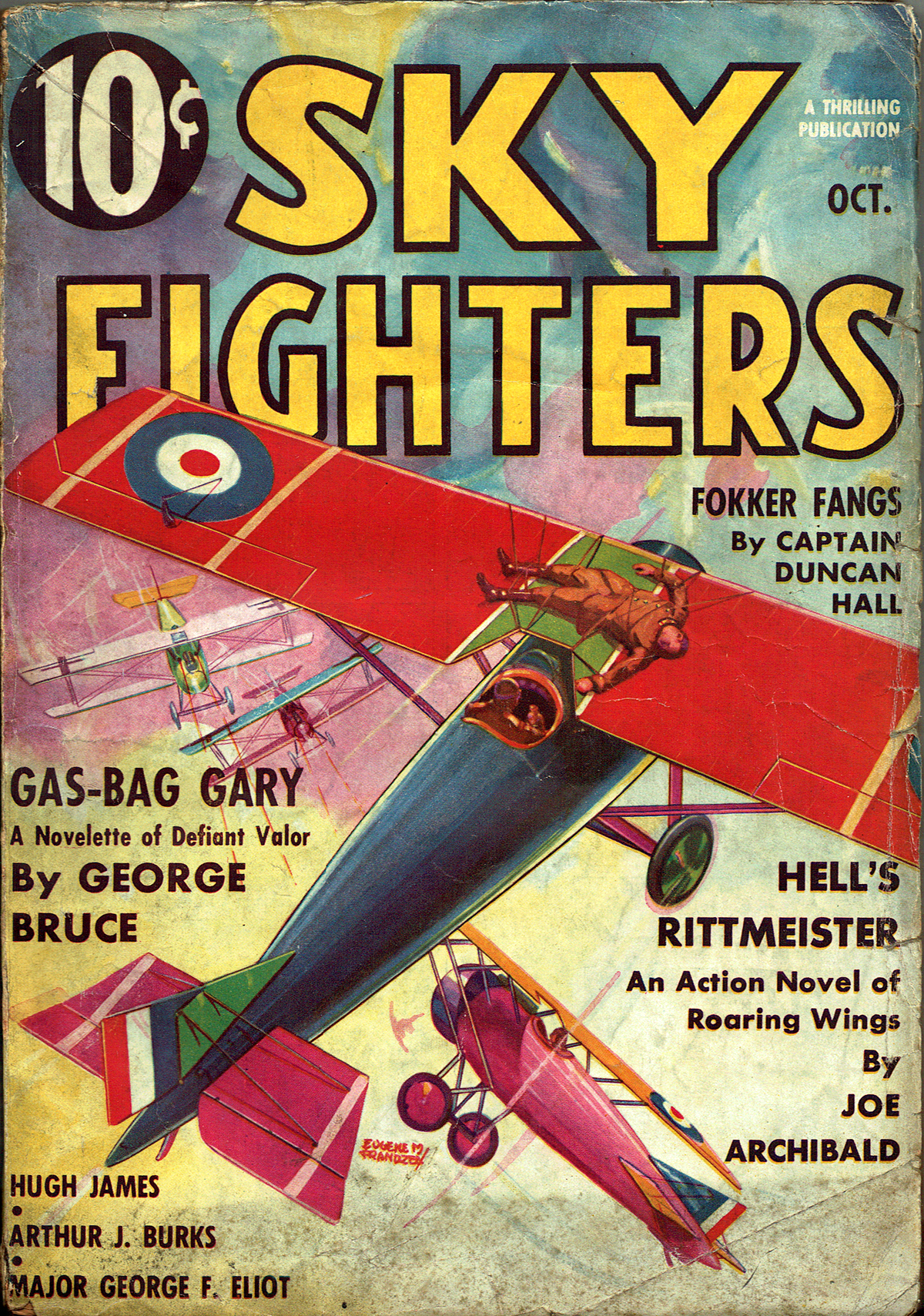
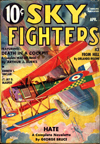
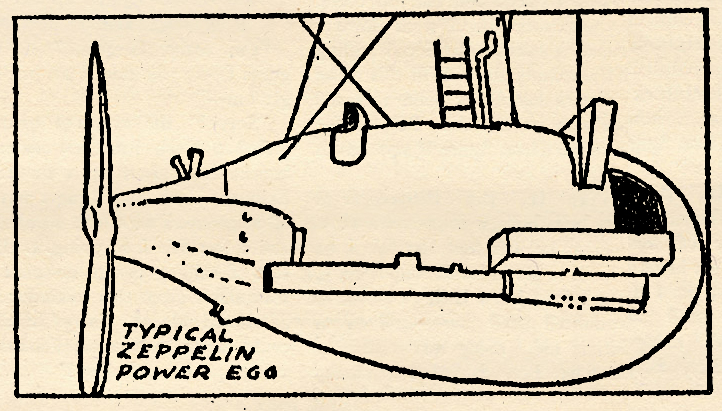
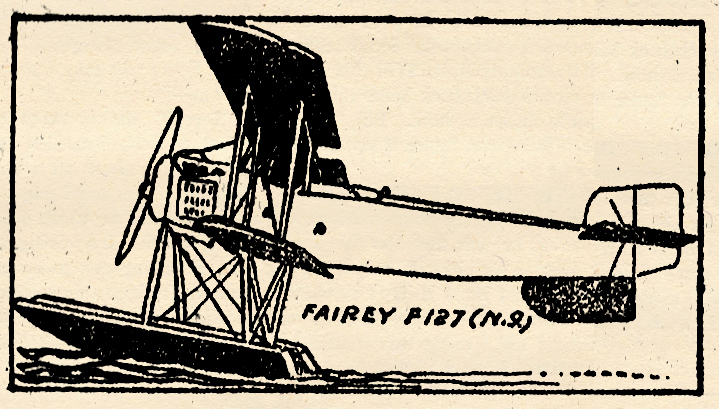
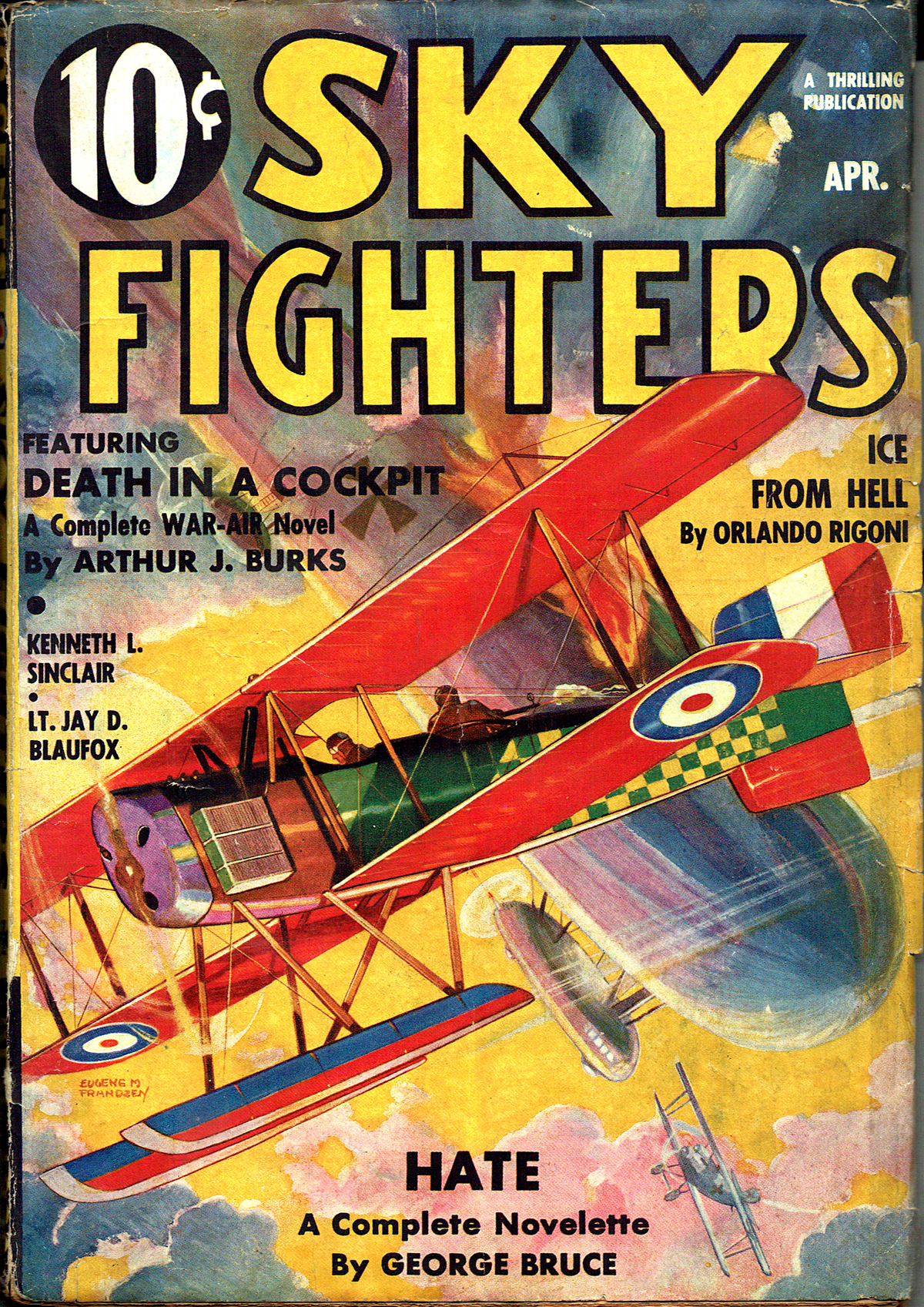
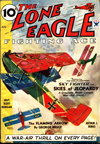


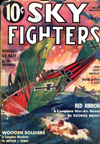
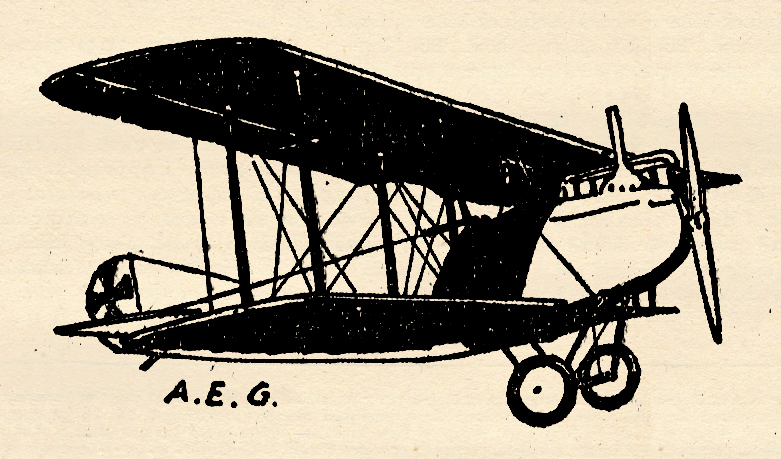
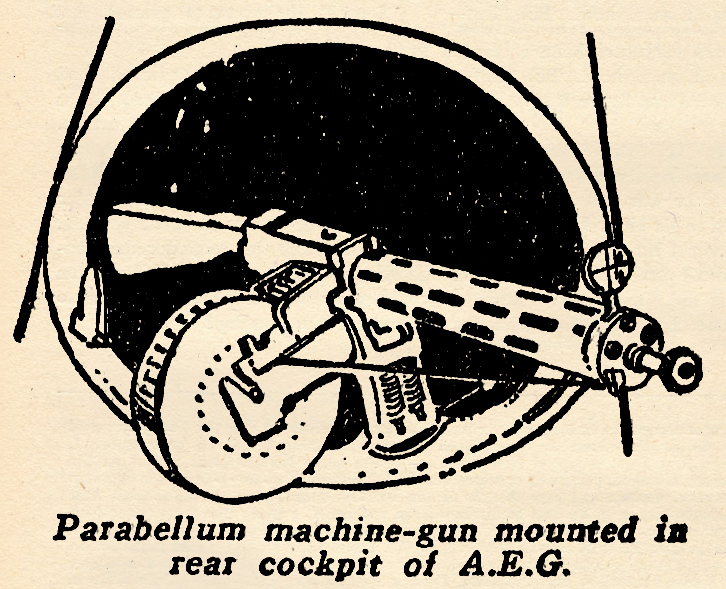
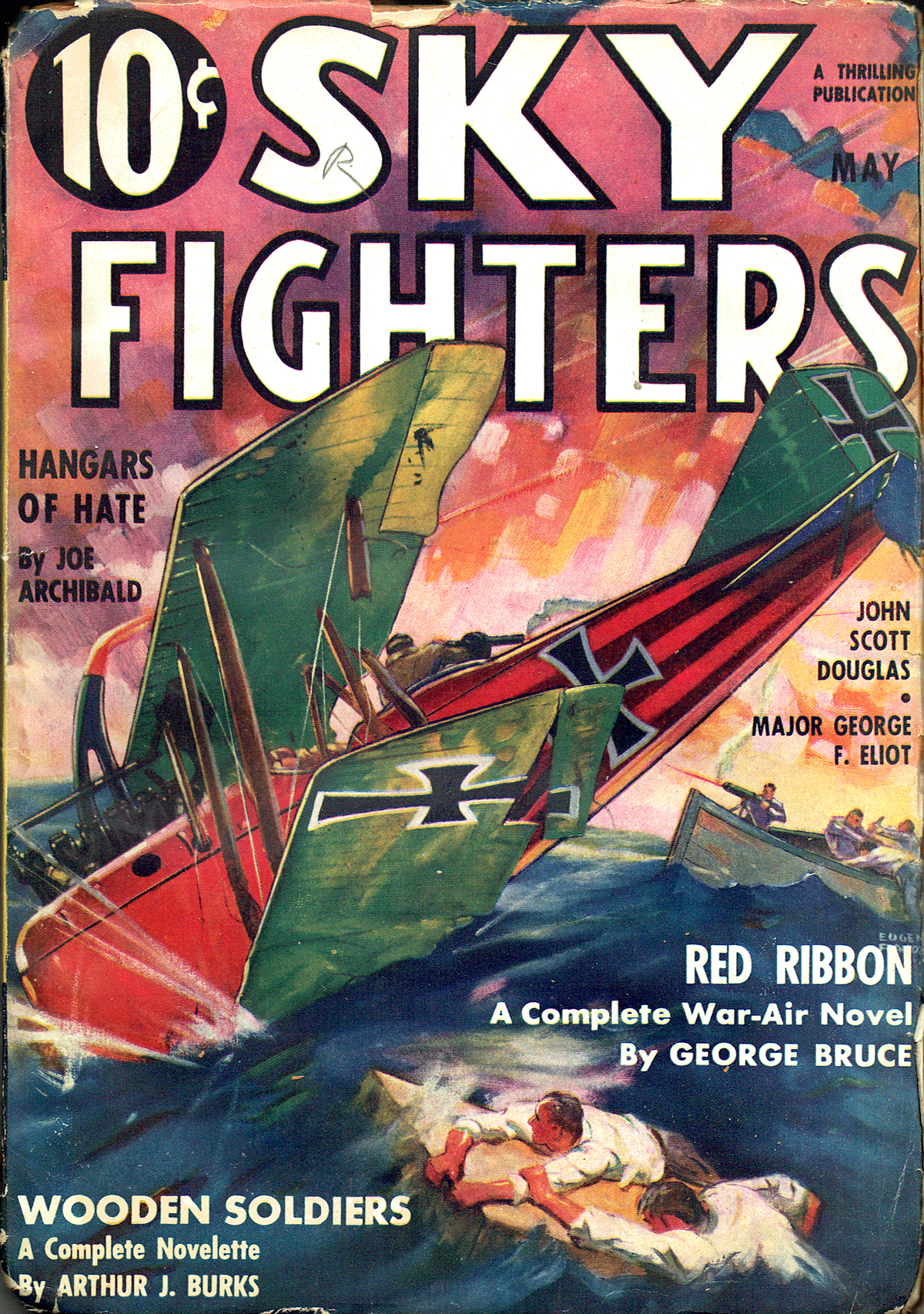
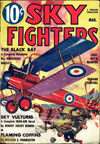
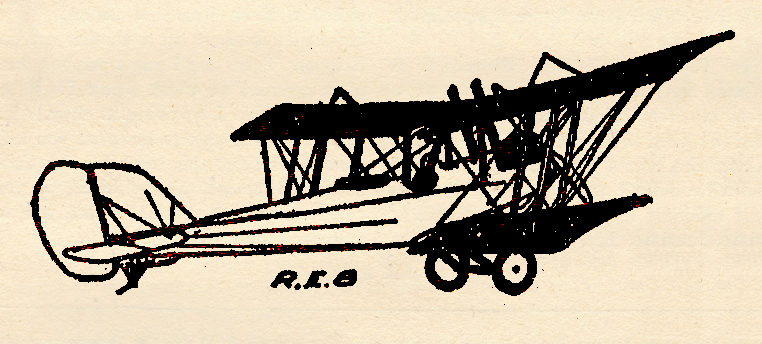
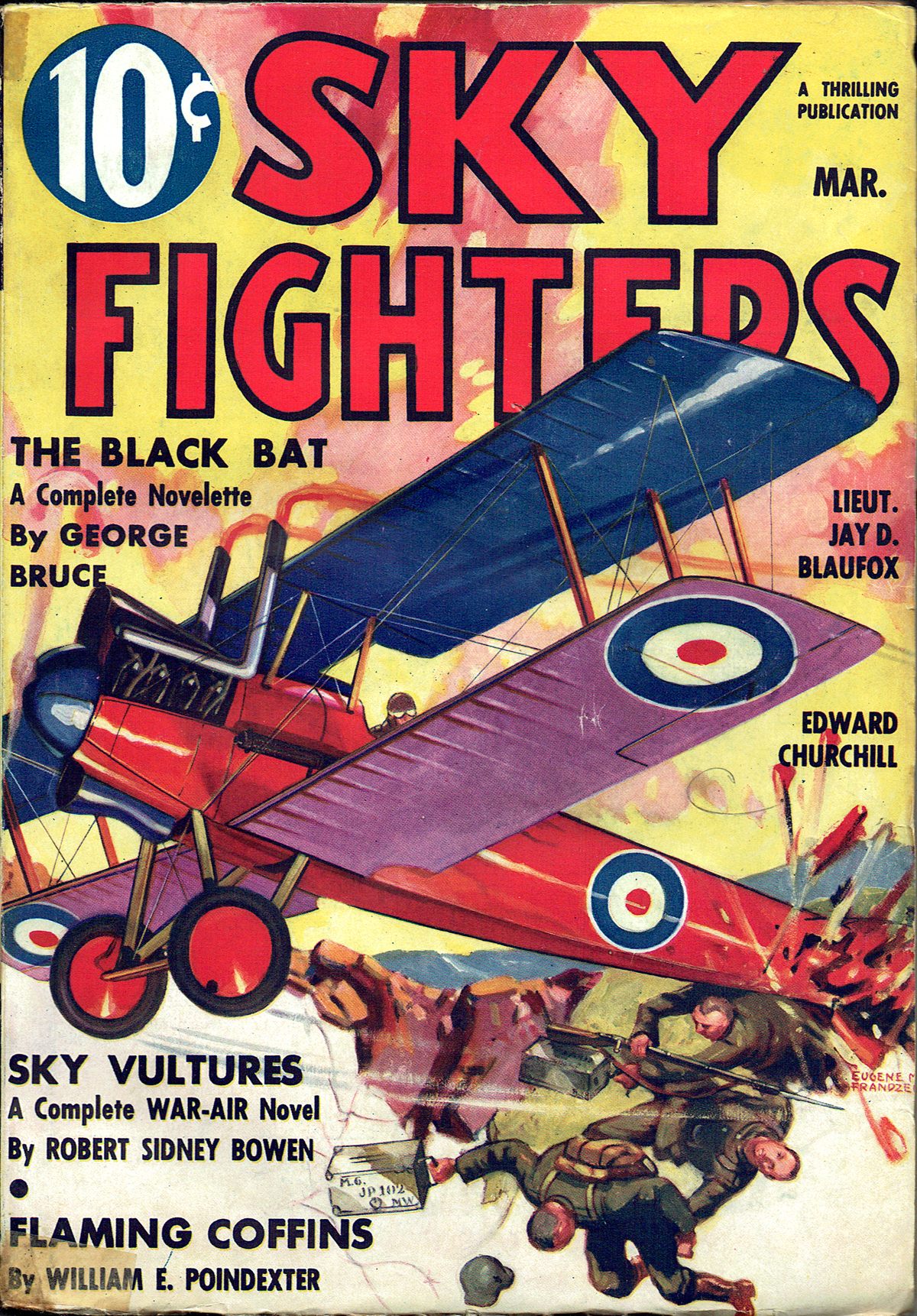
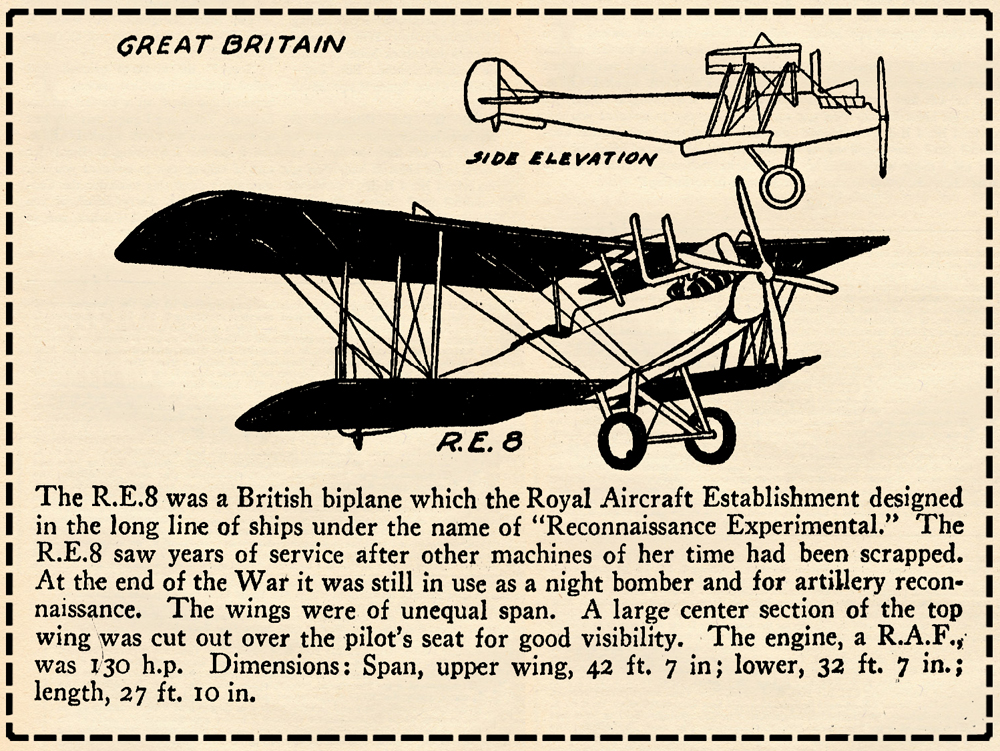
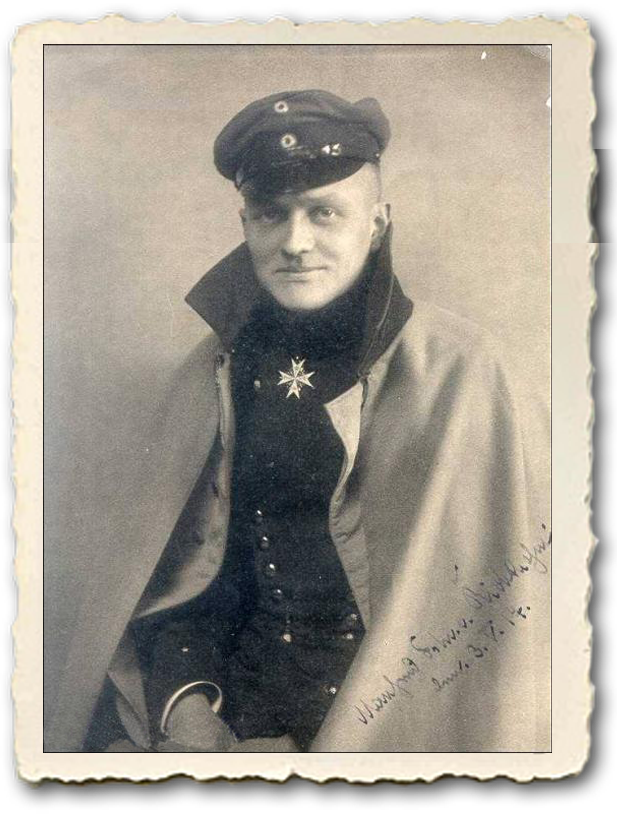 of
of 